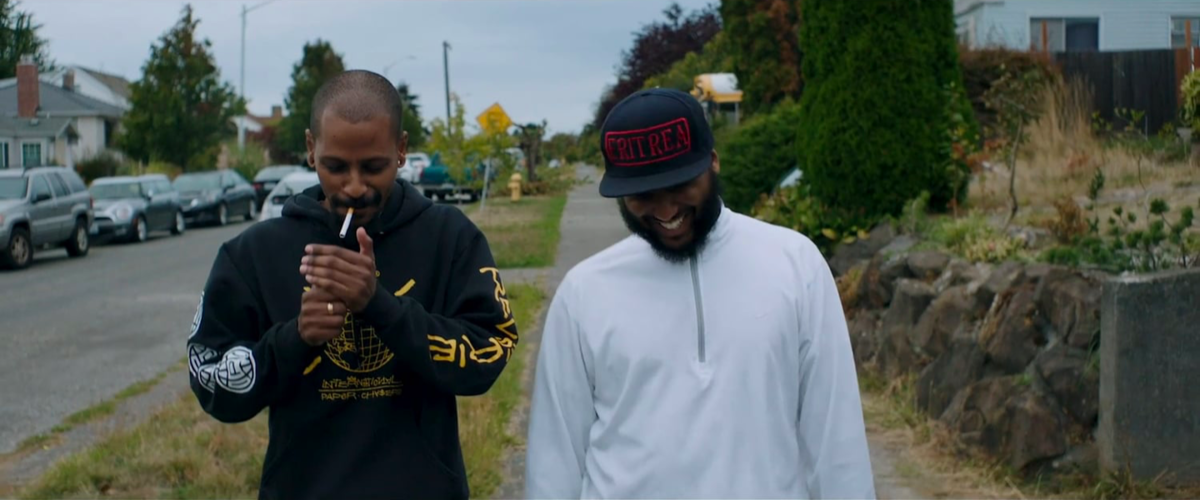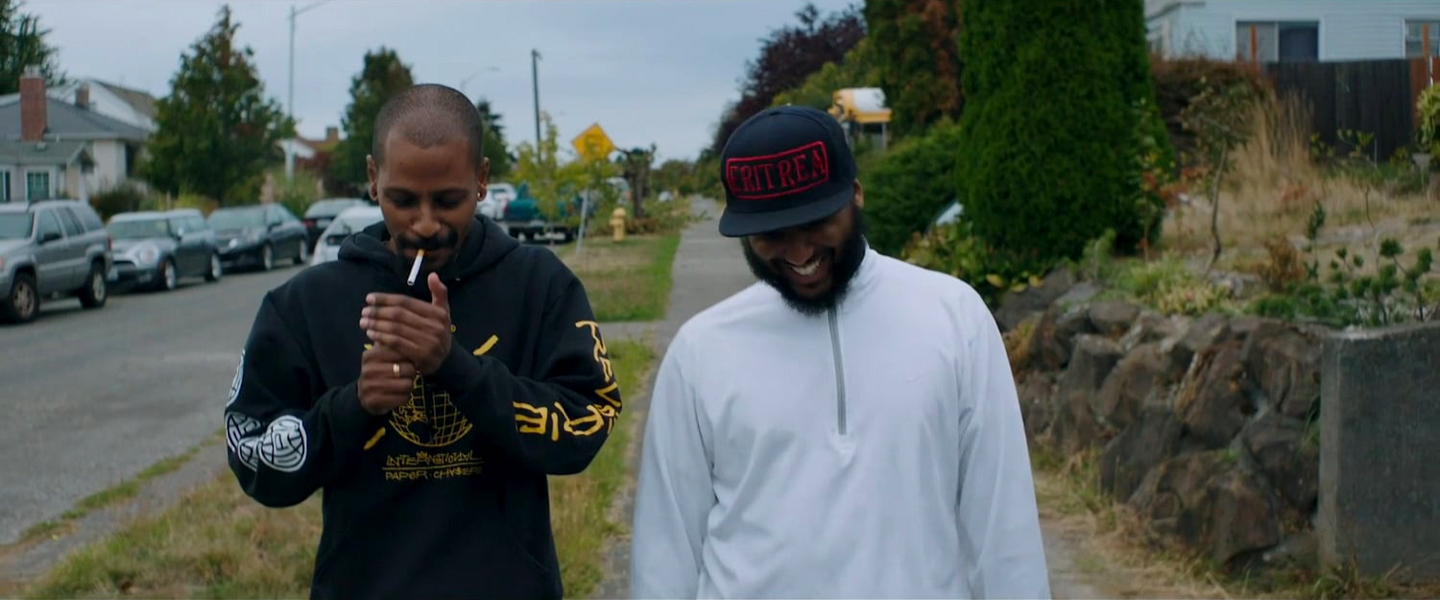Artist Cinemas presents
The Charcoal Sky: Chapter 5
Zia Moharjerjashi
2017
9 Minutes
Artist Cinemas
Week #6
Date
July 19–26, 2021
Join us on e-flux Video & Film for an online screening of Zia Moharjerjashi’s The Charcoal Sky: Chapter 5 (2017), streaming from Monday, July 12 through Sunday, July 18, 2021.
The Charcoal Sky is all about the light of the Pacific Northwest. That is all you need to know. Zia Mohajerjasbi, who is now based in Los Angeles, is a cinematographer whose best work so far begins and ends with the sharply slanted light of Seattle.
It is presented alongside an essay by Charles Mudede written in conversation with the filmmaker.
The Charcoal Sky is the sixth and final installment of Planet C, a program of films and essays convened by Charles Mudede, and comprising the seventh cycle of Artist Cinemas, a long-term, online series of film programs curated by artists for e-flux Video & Film.
Planet C runs from June 14 through July 26, 2021, with a new film and essay released each week. The program concludes with a repeat of all featured films streaming for one last day on July 26.
Seattle’s Charcoal Sky
Charles Mudede
The Light of the Pacific Northwest
How can we forget November 8, 1998? On that day, the TV show X-Files opened its sixth season with a look that was totally wrong. The light lost its spell because the program’s production had moved from Vancouver B.C. to Los Angeles. The fall of the light in the former is, for much of the year, sharply slanted; with the latter, it falls almost directly. The mood of slanted light, which is often diffused by droplets, is significantly different from that of dry and direct light. The mood of the X-Files for the first five seasons was that of an exquisite gloom (or stimmung, in the German Expressionist sense). This green-saturated and slanted light was first brought to my notice by the British-born and Seattle-based author Jonathan Raban. He described it to me in the winter of 1999, a few months before his masterpiece of Pacific Northwest literature, Passage to Juneau: A Sea and Its Meanings, was published. We were on the top floor of his three-story house on the north side of Queen Anne, a very leafy Seattle neighborhood. This light Raban praised as we drank French red wine is in Vancouver B.C., and ends a town or two south of Portland, Oregon. This light darkles best in early winter or in the middle of an evergreen forest (green on green). The Twilight Saga film series, which is set in a town, Forks, in the Olympic Peninsula (three or so hours drive from Seattle), and much of which was shot in Vancouver B.C., benefited enormously from the blend of dusky PNW light and dark greenery. The same is true of The Rise of the Planet of the Apes (2011). The Seattle theorist and artist Matt Offenbacher named this aesthetic “green gothic.”
The Twilight of the Yesler Terrace
At the beginning of the end of a partially cloudy day in August, 2014, the Iranian-American director and cinematographer Zia Mohajerjasbi was wholly lost in the shoot of a key scene for Hagereseb, a 2015 short film about East African kids in a Seattle public housing development called Yesler Terrace. His eye moved from one part of the thirty-acre site, which the New Deal completed in 1941 and Paul Allen (the late Microsoft billionaire) completely demolished by 2020, to another, searching for the right late-afternoon light. The tight alleys, the time-cracked sidewalks, the light-blue of beige siding, the side-sliding windows, the views of the city’s sprawling industrial area. He walked and walked and walked. Now, recall the lead character in Abbas Kiarostami’s Through the Olive Trees (1994), Hossein Rezai. Recall how this young, working-class man pursued the young and middle-class Tahereh. How he wanted her to be his wife. This was Mohajerjasbi pursuing the point in the project that made the most magic of the Pacific Northwest light. But he did finally find his light because the location and the subjects (the children of Africa) in his film are bathed in the magnificent gloom of the region’s autumnal mood.
Planet of the Apes
On a winter night in 2012, I find myself at the gate of a house on a tree-dark and icy road in Queen Anne, a neighborhood of Seattle. This is Jonathan Raban’s house. This is his gate. And that’s his huge and denuded oak tree. I’m here to have dinner. And an hour later, I’m eating a hearty lamb stew (spiced Indian style) and basmati rice as Raban, across the table from me, explains that during the day the windows on the third floor of his home present a great forest. Trees are everywhere; people are almost nowhere to be found. But at night, when the lights of human life emerge, the windows reveal that he does indeed live in a big city. Fremont and Ballard and Queen Anne are actually dense, urban neighborhoods; but this fact can only be seen after night falls. And the city is there until sunrise, at which point it vanishes like some vampire. After dinner, I walk to a bus stop not far from Raban house. It’s beneath a street lamp and a clear sky with a few cold stars. It occurs to me that something similar must happen with the view astronauts have of our planet from space. During the day, earth is all nature—green forests, blue seas, brown deserts, white mountaintops and clouds. But when the sun goes, nature goes with it, and the only thing one can see is the planet of the apes.
The Sun Setting on Kawabe Memorial House
The day in November, 2009 is coming to an end. The director Zia Mohajerjasbi is on the roof of Kawabe Memorial House, a ten-story building that mostly houses Japanese American seniors. He is shooting a video for a rapper, Maklemore, whose fame will arrive in 2012, with the hit “Thrift Shop.” All around the building, the autumn leaves of deciduous trees. Behind the building, the hill-rising Central District, a black neighborhood that had entered the very end of its twilight. (The CD would be fully gentrified a year after “Thrift Shop” tops the charts.) In front, the downtown area, with the standard towers of global capital accumulation; and, beyond downtown, the mountains that separate Seattle from Forks, the sullen town of the teen vampires. The crew and star of the music video, an ode to 206 hiphop called “The Town,” want to get things started; but Mohajerjasbi will not start until the light—now between the clouds and Cascadia—is distilled to that Salishan spell.
Haunted Water
Jonathan Raban writes in Passage to Passage to Juneau: “The maritime art of these mostly anonymous Kwakiutl, Haida, and Tsimshian craftsmen appeared to me to grow directly from their observation of the play of [Pacific Northwest] light on the sea. Trailing through the museums of Seattle, Vancouver, and Victoria, then, later, through the Northwest Indian galleries of the American Museum of Natural History in New York and the Menil Collection in Houston, I saw a water-hauntedness in almost every piece.”
Winter Light
“No one will tell you this,” says Zia Mohajerjasbi, “They’ll all say it’s the summertime. It is wonderful, but the most beautiful time of year in the PNW is winter. When the sun’s zenith barely reaches the height that it does at 5 pm on a summer’s day. Any hour throws a long shadow—if you can find one. The best available light is often fleeting, and this is all the more exaggerated here beneath Seattle’s charcoal sky; any trace of Rayleigh scattering obscured for weeks on end above a bed of clouds. But when you get it, it is magic.”
For more information, contact program [at] e-flux.com.


